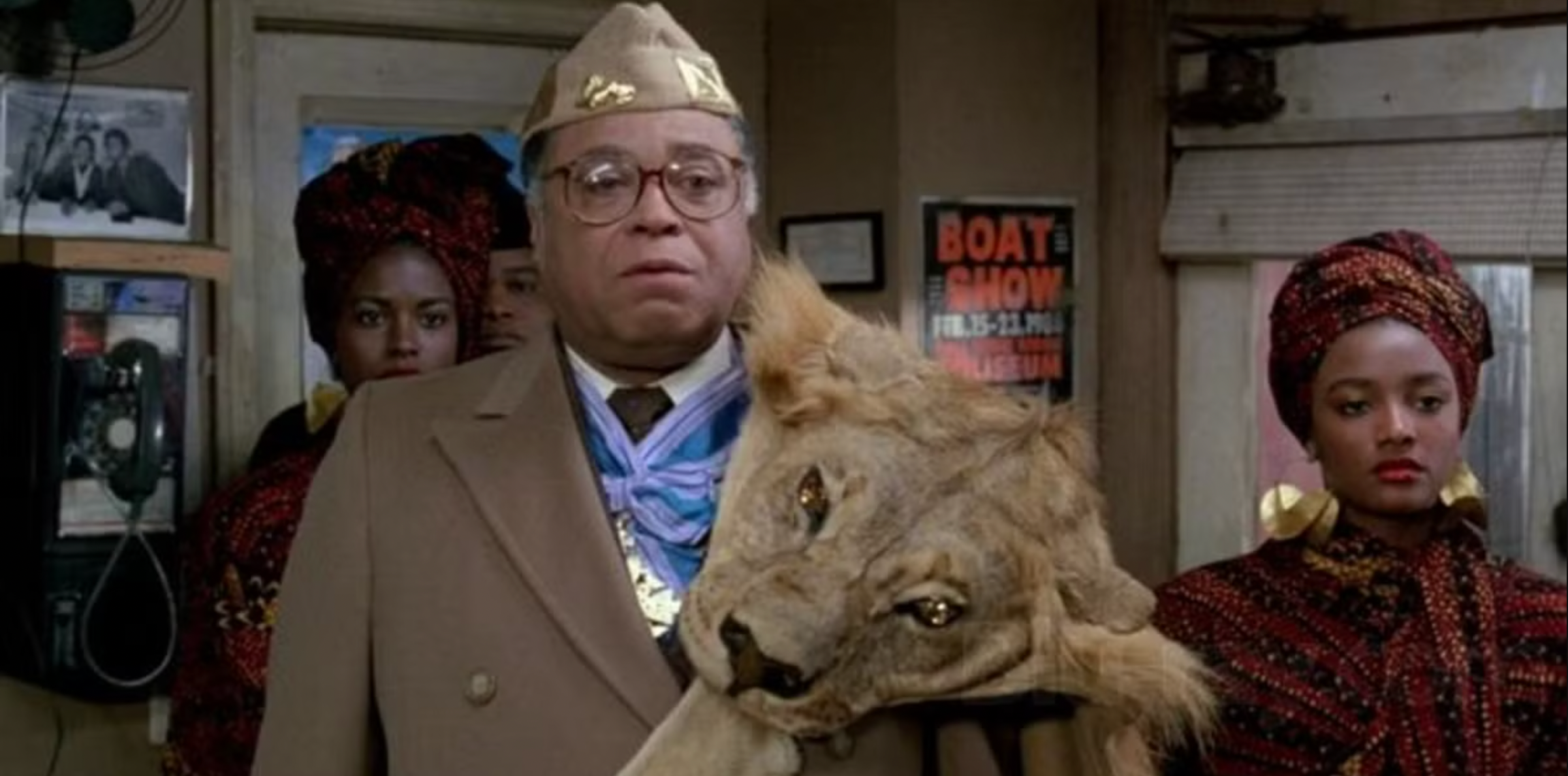- (½ cup (120 ml) plus 4 tablespoons grapeseed oil
- 1 pound (455 g) fresh tomatoes (preferably plum/Roma), chopped
- 7 ounces (200 g) red bell pepper, chopped
- 4 ounces (125 g) red onion, chopped
- 1 head garlic, cloves peeled and chopped
- ½ ounce (40 g) fresh ginger, peeled and chopped
- 2 Scotch bonnet peppers, seeded and chopped
- 3 or 4 dried chipotle peppers, diced
- 1 tablespoon smoked paprika
Excerpted from Black Power Kitchen
by Jon Gray, Pierre Serrao, and Lester Walker, with Osayi Endolyn
King Jaffe Jollof
King Jaffe Jollof

Jollof rice is a beloved, delicious, and at times joyously, if hotly, contested dish from West Africa. The Ghanaians, Nigerians, Liberians, and Cameroonians make it, but the Wolof people of modern-day Senegal (once known as the Jolof or Jollof Empire) established the recipe’s baseline with the dish thieboudienne.
The insider’s joke about jollof is that its many fans debate who deserves credit for bringing us this perfect mix of rice, tomatoes, peppers, and spice. We’re not about to weigh in on the so-called jollof wars, but we’re inspired by all approaches. One preparation known to many Nigerians as “party rice” can include open-fire cooking that gives the rice a smoky flavor and crispy grains at the bottom of the pot.
Iterations of jollof in the United States include the staple Gullah Geechee red rice (or Charleston red rice), a direct reflection of the people from Senegambia who were brought to the Lowcountry specifically for their mastery in cultivating the grain and establishing irrigation systems. Don’t believe for a moment what you see in American history books, that European traders randomly rounded up unskilled African people. The practice of enslavement was far more dubious and strategic; the cost of transporting unwilling humans was too expensive to exist without intention. And stateside, those born into slavery apprenticed not just as field laborers (themselves, to this day, an underpaid, under regarded skilled group) but also as carpenters and stonemasons, blacksmiths and bricklayers, cooks and bakers, fishers and sailors, horse trainers and tailors.
Rice History
South Carolina made its preindustrial wealth off of the rice Black people grew, harvested, and milled, the outcome of which contributed to a global economy. A lot went down for us to have the pleasure of red rice, or jollof rice, in any form today.
Thinking of our influences surrounding this dish and our relationship to Africa, the fictional land of Zamunda, as featured in the Eddie Murphy film Coming to America, was Wakanda for our generation. The movie was a groundbreaking and lighthearted comedy when it hit the streets in 1988, and we still feel pride in the Joffer family, spearheaded by King Jaffe Joffer as portrayed by the great James Earl Jones. Since our version of jollof is a mash-up, we’re shouting out this pivotal representation in American cinema that brought positive shine to the continent in ways many Black Americans hadn’t seen before.
The Process
We extract robust flavors every step of the way. Use a mushroom dashi, toast all your spices, and char the bell pepper, onions, ginger, and garlic. Give yourself a day ahead to prep the dashi. And if you’re new to jollof, understand that the best versions have a balanced ratio of sauce to rice. We’re not looking for a saucy dish but a silky rice. Make it nice.
THE INGREDIENTS
- 1 tablespoon chopped black garlic (4 cloves)
- 1 tablespoon whole black peppercorns
- 1½ tablespoons Madras curry powder
- 1½ teaspoons ground cinnamon
- 1½ teaspoons cumin seeds, toasted and ground
- 1½ teaspoons hot sauce (preferably Tabasco)
- 1 tablespoon tamari
- 2 teaspoons soy sauce
- 2 teaspoons Worcestershire sauce
- 1 teaspoon agave syrup
- 1 tablespoon flaky sea salt
- 2⅔ cups (500 g) uncooked jasmine rice
- 2½ cups (600 ml) Mushroom Dashi (page 292)
LET'S CHOP IT UP
In a medium saucepan, heat ½ cup (120 ml) of the grapeseed oil over high heat. When the oil starts to smoke, add the tomatoes. Leave the tomatoes to sizzle in the oil for several minutes without moving them around, allowing them to char on the bottom. It’s okay if they get a little burnt. After about 5 minutes, flip the tomatoes and cook until they reduce and begin to break down.
Meanwhile, in a bowl, combine the bell pepper and onion and toss with about 2 tablespoons of the oil, enough to lightly coat them.
In a separate saucepan, heat the remaining 2 tablespoons of oil over high heat. Add the bell pepper and onion and leave to char for 2 to 3 minutes. Add the garlic and ginger, gently stir, and leave to char for 1 to 2 minutes more. Don’t let the garlic and ginger burn.
Add the charred vegetables to the pot with the tomatoes. Add all the peppers, paprika, black garlic, peppercorns, curry powder, cinnamon, cumin, hot sauce, tamari, soy sauce, Worcestershire, agave, and salt.
TIME TO REDUCE
Stir well to incorporate the ingredients, then reduce the heat to low, cover, and cook for 20 to 30 minutes, until the mixture softens and reduces. It should look like a paste when it’s done.
Transfer the mixture to a food processor or blender and blitz well to achieve a smooth paste consistency. Add a little water and blitz again. Pass the sauce through a sieve into a container. Set aside.
Rinse the rice well, then drain it. In a cast-iron skillet (to get the best char), combine the rice, mushroom dashi, and ½ cup (120 ml) of the strained sauce. (The remaining sauce will keep in an airtight container in the refrigerator for up to 1 month or in the freezer for up to 6 months.)
Cover and simmer for 18 to 20 minutes, until the rice is cooked through. Remove from the heat and allow the rice to rest, covered, for 10 minutes. Serving suggestion: roasted vegetables or fried sweet plantain.







